Mississippi Gulf Coast weather birding: Spring fallout prediction (2017 edition)
Overview: This protocol was written to guide prediction of migratory bird fallout conditions on the Mississippi Gulf Coast during spring migration. During that time, many migratory songbirds launch from the Yucatan peninsula in the evening, fly north overnight, and reach the Gulf Coast sometime the next day, often mid- to late-morning. Our original goal in creating this protocol was to aid in running a Big Day attempt on the day after a fallout, so we wanted to predict decent fallout conditions on a particular day, and then we wanted decent weather for birding the next day. If that is our goal, after a fallout we want overnight north winds & light rain to keep migrants grounded near the coast, followed by a day of good weather for birding, with some sun to get raptors up. For Big Day planning, the minimum goal should be avoiding really terrible conditions (e.g., running a Big Day after one or more sustained days of sun and south winds during which most of the migrants have departed), even if we don’t achieve perfect conditions, and targeting a time window in approximately the last two weeks of April, for maximum diversity. However, if you’re not trying to run a Big Day, then you can optionally try to bird on a fallout day itself, and you might have a broader time window (earlier in April, and into early May).
Here are some basic steps to follow:
First check other people’s migration forecasts:
Read any recent posts by Bob Duncan predicting birding conditions for northwest Florida and coastal Alabama on ALBIRDS: http://digest.sialia.com/?rm=one_list;id=88
Check the latest on BirdCast: http://birdcast.info/forecasts/
Second, check various long-term forecasts, to identify potentially good conditions in the future—look for low pressure systems and rain/storms heading for the Gulf Coast.
For example, check the 10-day forecasts for Gulfport, MS on weather.com, National Weather Service, and Weather Underground. Note that all 3 do not always agree, and Weather Underground may be more accurate, due to the use of more weather stations.
http://www.wunderground.com/weather-forecast/US/MS/Gulfport.html
http://www.weather.com/weather/tenday/l/Gulfport+MS+USMS0145:1:US
http://forecast.weather.gov/MapClick.php?lat=30.39&lon=-89.07#.VTg3uJPUtKU
Third, when you see a promising weather front on the horizon, start making your own checks for the specific desired conditions:
Check current and predicted launch conditions in the Yucatan, in early evening. If conditions are good (southerly winds, clear skies), birds will be launching. They may also launch against light north winds at ground level, especially during the late migration period (late April / early May). Bad conditions for launch would be cloudy and rainy and/or strong north winds, over the Yucatan.
Check Merida (Yucatan capital city) weather forecast: https://www.wunderground.com/global/stations/76644.html
Check marine forecast for the Southern Gulf: http://forecast.weather.gov/shmrn.php?mz=gmz025&syn=gmz001 (or go here and click on part of the map: http://www.nws.noaa.gov/om/marine/zone/off/offnt4mz.htm)
Check prediction for overnight winds over the mid-Gulf (at ~2500 feet elevation). We desire West or Southwest winds ideally, vectoring birds to the east, away from Texas and towards Mississippi. **This may occasionally cause good passerine birding on the MS coast, even without rain. South or Southeast winds OK too.
Check 12-hour forecast for winds at about 2500 feet elevation: http://weather.rap.ucar.edu/model/ruc12hr_925_wnd.gif (or go here: http://weather.rap.ucar.edu/model/ and click on “925 mb winds” for 2500-foot elevation plot, or click “300 mb winds” for winds at 30,000 feet elevation, which gives a good overview)
Check predicted surface winds over the Gulf: http://polar.ncep.noaa.gov/waves/product_table.shtml?-gmex-multi_1-u10-latest- (scroll down to Step 5, and select a forecast time, e.g. +9 or +12 hours to predict nighttime winds if you are checking at 5pm)
Check marine forecast for the Central Gulf: http://forecast.weather.gov/shmrn.php?mz=gmz019&syn=gmz001
Check prediction for a low pressure system bringing a rainy front and (ideally) north (or west) winds out over the gulf, offshore (but not all the way into the central/southern Gulf), in the mid- to late-morning as the migrants who launched the previous evening are getting close to the coast. Rain will usually cause some migrants to fall out, even without north winds, but they won’t stick around long without north winds. A dry front will only drop birds if its eastern boundary is right over the MS coast. A front moving out over the Gulf during the night is OK too, stalling in the north Gulf through mid-morning (as long as it isn’t too far south early in the night, causing migrants to turn back). If birds have lacked a tailwind overnight, and do not have a tailwind as they approach the coast, a small fallout may occur even without rain.
Check national weather maps: http://www.nws.noaa.gov/outlook_tab.php (**scroll down and click on forecasts from 12 hours to 6 days)
Use this tool to look at precip probability forecasts: http://graphical.weather.gov/sectors/conus.php?element=PoP12
Check offshore marine forecast for MS/LA coast: http://forecast.weather.gov/shmrn.php?mz=gmz575&syn=gmz500 (or go here and click on the desired zone: http://www.nws.noaa.gov/om/marine/zone/gulf/lixmz.htm)
Check marine forecast for the North Central Gulf: http://forecast.weather.gov/shmrn.php?mz=gmz013&syn=gmz001
Check forecast for north winds, cloud cover, and/or light rain persisting after the front, and continuing the next day, to discourage migrants from taking off overnight or moving inland, so that we can find them on the day after the fallout. But watch wind forecasts because really strong winds and heavy rain the next day could make migrant detection difficult.
Check local forecast for Gulf Coast, e.g., Gulfport again:
http://www.wunderground.com/weather-forecast/US/MS/Gulfport.html
http://www.weather.com/weather/tenday/l/Gulfport+MS+USMS0145:1:US
http://forecast.weather.gov/MapClick.php?lat=30.39&lon=-89.07#.VTg3uJPUtKU
****************************************************************************
This protocol was compiled by Jason Hoeksema, using advice from a variety of sources, especially Bob Duncan (both from his ALBIRDS posts and his now-out-of-print booklet on weather birding) and Derek Lovitch’s 2012 book called How to be a better birder. For an overview or review of interpreting online resources to predict bird migration, see this website: http://www.nemesisbird.com/bird-science/ultimate-guide-migration-online/
Also useful is the “Badbirdz Reloaded” website, which (when it was active) predicted bird migration for Florida (https://badbirdz2.wordpress.com/), but is still a good website on which to read old posts and learn from them.
